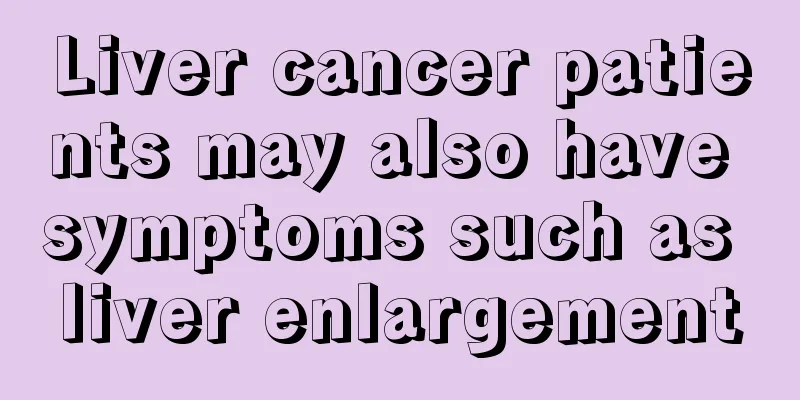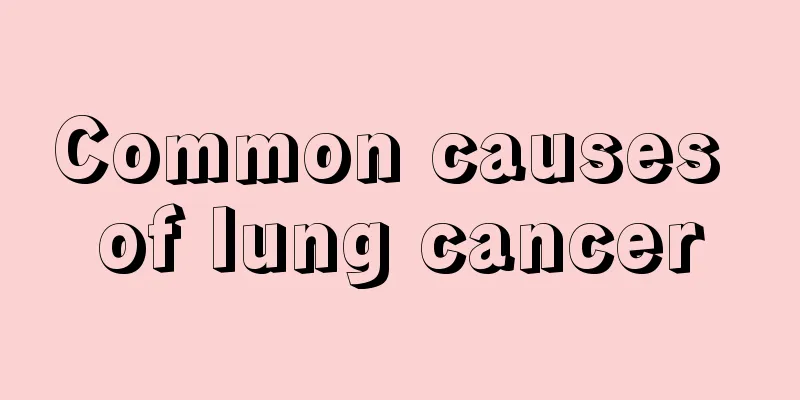Abnormal bilirubin

|
Bilirubin is the main pigment in human bile. It is used clinically to diagnose jaundice and is also an important indicator of liver function. Abnormal bilirubin means that there may be problems with liver function. The most common is elevated bilirubin, which may be caused by many reasons. We need to have a full understanding of abnormal bilirubin so that we can have a preliminary understanding of our own problems. High bilirubin 1. High bilirubin may be caused by liver disease. Because when liver cells are diseased or swollen (mostly caused by liver diseases such as acute icteric hepatitis, acute yellow liver necrosis, chronic active hepatitis, cirrhosis, etc.), the bile ducts in the liver may be compressed and the excretion of bile may be blocked, which can cause high bilirubin in the blood and lead to hepatocellular jaundice (manifested by increased direct and indirect bilirubin). 2. High bilirubin may also be caused by biliary system diseases. When tumors or stones occur in the extrahepatic biliary system and block the bile duct, bile cannot be excreted smoothly, which can cause high bilirubin and obstructive jaundice. Hypertrophy Research has shown that the color of bilirubin is orange-yellow, and when the bilirubin level in the blood is high, it will manifest as yellowing of the sclera, skin, mucous membranes, and other tissues and body fluids, resulting in yellowing. Specifically, 1. When the serum bilirubin concentration is much higher than the normal bilirubin value, the skin, eyes, and urine appear yellow, which is jaundice. Inflammation, necrosis, poisoning and other damages to the liver can cause jaundice. Biliary tract diseases and hemolytic diseases can also cause jaundice. 2. If the bilirubin value is between 17.1-34.2μmol/L, jaundice cannot be seen by the naked eye, which is called latent jaundice. 3. If the bilirubin value is greater than 34.2μmol/L, yellowing of the eyes, skin, and urine can be seen with the naked eye, which is called overt jaundice. The higher the total bilirubin value, the more severe the jaundice. Reasons for high The life span of human red blood cells is generally 120 days. After the red blood cells die, they become indirect bilirubin (I-Bil), which is converted into direct bilirubin (D-Bil) by the liver, forms bile, is discharged into the bile duct, and is finally excreted through the feces. This is the normal conversion of bilirubin in the liver. However, if other diseases occur, it will lead to abnormal liver metabolism, and the indirect bilirubin cannot be converted into direct bilirubin normally, resulting in high bilirubin in the serum. Hemolytic jaundice may occur at this time; when liver cells are diseased, either because bilirubin cannot be converted into bile normally, or because liver cells swell, the bile ducts in the liver are compressed, the excretion of bile is blocked, and the bilirubin in the blood increases, and hepatocellular jaundice occurs at this time; once a tumor or stones occur in the extrahepatic biliary system, the bile duct is blocked, bile cannot be excreted smoothly, and obstructive jaundice occurs. The jaundice in hepatitis patients is generally hepatocellular jaundice, which means that both direct bilirubin and indirect bilirubin are elevated, while patients with cholestatic hepatitis mainly have elevated direct bilirubin. Pathologically speaking, the conditions that lead to high bilirubin in the blood mainly include the following: 1. Increased total bilirubin and direct bilirubin: intrahepatic and extrahepatic obstructive jaundice, pancreatic head cancer, capillary cholangiohepatitis and other cholestasis syndromes, etc. 2. Increased total bilirubin and indirect bilirubin: hemolytic anemia, blood transfusion due to incompatible blood type, malignant disease, neonatal jaundice, etc. 3. Total bilirubin, direct bilirubin and indirect bilirubin are all increased: acute icteric hepatitis, chronic active hepatitis, cirrhosis, toxic hepatitis, etc. 4. Indirect bilirubin is too high. Excessive destruction of red blood cells in the body will prevent the liver from completely converting indirect bilirubin into direct bilirubin, resulting in high indirect bilirubin in the body. Common causes of high indirect bilirubin include hemolytic anemia, blood type incompatibility during blood transfusion, neonatal jaundice, etc. 5. Direct bilirubin is too high. If liver cells are damaged, direct bilirubin cannot be converted into bile normally, or bile excretion is blocked, which will cause direct bilirubin to be too high. Common causes of direct bilirubin to be too high include intrahepatic and extrahepatic obstructive jaundice, pancreatic head cancer, capillary cholangiocarcinoma and other cholestasis syndromes. High risk Bilirubin is a waste product of the metabolism of hemoglobin in red blood cells in the blood. If the bilirubin level in serum is too high, it indicates abnormalities such as liver disease or bile duct obstruction. The level of serum bilirubin represents the severity of the abnormality. If too many red blood cells are destroyed and too much indirect bilirubin is produced, the liver will not be able to completely convert it into direct bilirubin, resulting in hemolytic jaundice. The inability of bilirubin to be converted into bile normally, liver cell lesions, liver cell swelling, compression of the intrahepatic bile duct or obstruction of bile excretion will all lead to an increase in bilirubin in the blood, leading to hepatocellular jaundice. Tumors or stones occur in the extrahepatic biliary system, causing bile duct obstruction and inability to excrete bile smoothly, leading to obstructive jaundice. Jaundice in hepatitis patients is mainly hepatocellular jaundice. |
<<: Does elbow fracture require surgery?
>>: What happens if you drink alcohol when you have herpes zoster
Recommend
How does liver cancer develop? Pay attention to these liver cancer-causing factors
Moldy pickled foods contain serious carcinogens A...
Six-month-old baby's stool has blood streaks
The baby's poop is sometimes a barometer of t...
Does hiccups and ear pain mean otitis media?
I believe everyone knows that otitis media is a r...
What are the symptoms of liver cancer? What are the clinical symptoms of liver cancer?
When it comes to liver cancer, the first thing th...
Can Hamartoma be cured
Hamartoma does not affect the body when it is sma...
What are the histological classifications of lung cancer?
Do you know the histological classification of lu...
The functions and effects of the lungs
The lungs are an important organ in our human bod...
What are the obvious manifestations of early symptoms of bile duct cancer
Cholangiocarcinoma is a malignant tumor and a rel...
What are the clinical symptoms and immune factors of type 1 diabetes?
Diabetes is a type of diabetes that has become mo...
What are the ten major benefits of taking a bath?
In recent years, more and more Chinese medicine b...
Where is the stomach located in the human body
Many people in life need to eat, not many people,...
What are the benefits of mugwort water fumigation
I believe everyone is familiar with mugwort, espe...
How to wash off oil stains on clothes
The clothes we wear in autumn and winter are gett...
What are the characteristics of a universal blood recipient
The so-called universal blood recipient actually ...
How are intracranial cysts formed
Intracranial cysts mainly refer to intracranial a...









